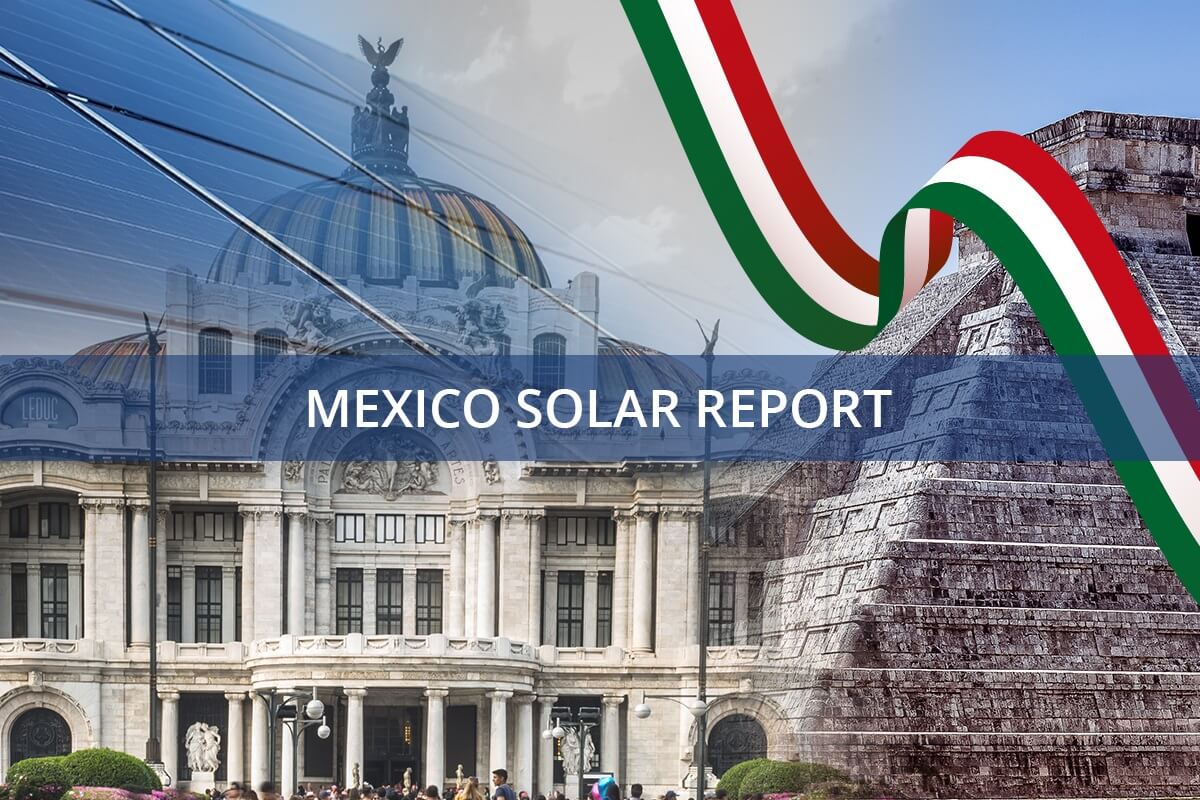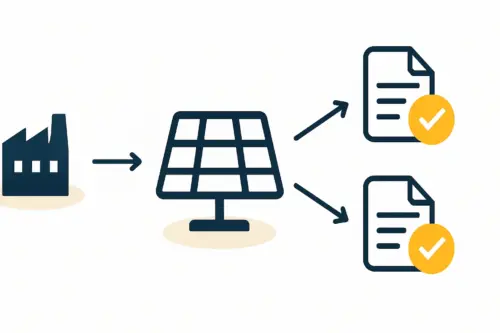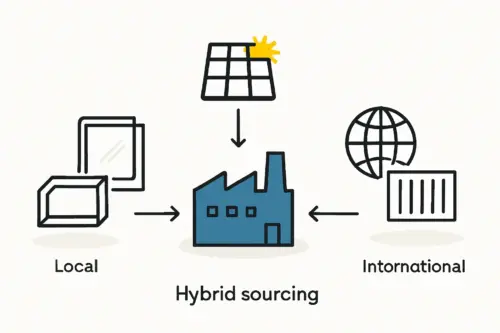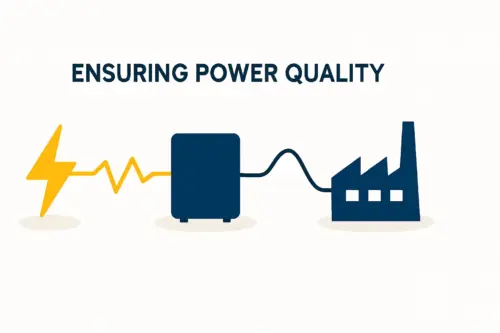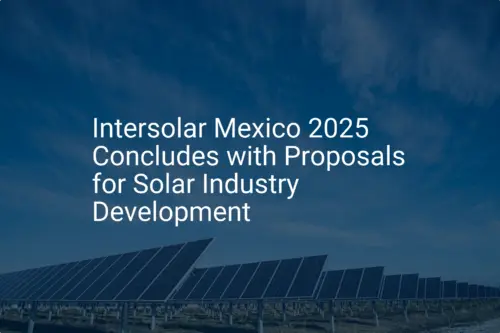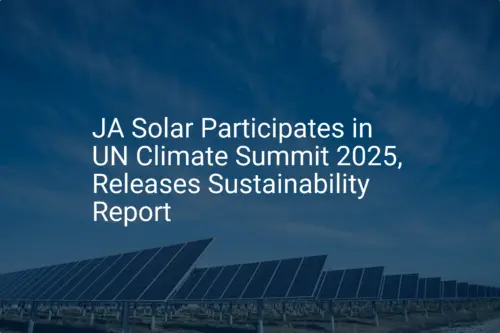The global shift toward nearshoring puts Mexico in a uniquely strategic position, particularly for manufacturing ventures aimed at the vast North American market. For entrepreneurs looking to enter the solar industry, this geographical advantage presents a significant opportunity.
Success, however, hinges on more than proximity; it requires leveraging the right regulatory frameworks to create a financially viable and competitive operation.
One of the most powerful tools available is Mexico’s IMMEX program. This framework has helped transform the country into a world-class export hub by allowing foreign manufacturers to operate with substantial tax and customs benefits. For a solar module assembly plant, understanding and utilizing this program can be the deciding factor between a marginal operation and a highly profitable one.
This article breaks down the IMMEX program, explaining how it applies to solar module manufacturing and what it takes to qualify.
What is the IMMEX Program?
The IMMEX program, short for Industria Manufacturera, Maquiladora y de Servicios de Exportación, is a government initiative that allows companies to temporarily import raw materials, components, and machinery into Mexico. These imports are brought in without paying import duties or value-added tax (VAT).
The core principle is simple: imported goods are used in an industrial process within Mexico, and the finished products are then exported. So long as the goods do not remain in Mexico permanently, the government waives the standard import taxes. This duty-deferral model is the foundation of the maquiladora industry and a key driver of foreign investment in Mexican manufacturing.
For a solar module factory, this means essential components like photovoltaic cells, EVA film, backsheets, glass, and aluminum frames can be brought into the country without incurring the typical 16% VAT and other import duties, as long as the final assembled solar panels are destined for export.
The Strategic Advantage for Solar Module Assembly
The North American solar market, particularly the United States, is one of the largest and fastest-growing in the world. Establishing a manufacturing base in Mexico under the IMMEX program offers a direct, cost-effective pathway to serve this demand.
Duty-Free Importation of Key Components
The primary benefit is financial. A typical solar module is assembled from components sourced from various global suppliers. The ability to import these items without upfront tax burdens drastically improves cash flow and reduces the production cost per watt.
The solar module manufacturing process involves several key imported materials:
- Solar cells (the most expensive component)
- Tempered glass
- EVA (ethylene vinyl acetate) encapsulant
- Backsheets or a second pane of glass
- Aluminum frames
- Junction boxes and cables
Under IMMEX, all these items can be imported temporarily, assembled into finished modules, and exported—creating a highly efficient supply chain.
Ready to make big Profits?
The solar Industry is Booming
WE HELP NEWCOMERS to the solar industry start their own solar module production line. Customers can make BIG PROFITS by selling modules and finding investors, without wasting money and time on things they don't need!
Proximity to the U.S. Market
Manufacturing in Mexico bypasses the logistical challenges and costs associated with trans-Pacific shipping. Instead of weeks at sea, finished products can reach major U.S. distribution hubs within days via truck or rail.
This proximity reduces transportation costs, minimizes inventory requirements, and allows for a more agile response to market demand. Producing within North America also offers strategic advantages related to trade agreements like the USMCA (United States-Mexico-Canada Agreement) and helps mitigate the impact of tariffs that may be applied to goods from other regions.
VAT Certification and Benefits
Qualified IMMEX companies can also obtain a special VAT certification. This allows them to avoid paying the 16% VAT on their temporarily imported goods. Without this certification, a company would have to pay the VAT and then file for a refund upon exportation—a process that can be slow and tie up significant working capital. Achieving this certification is a critical step in maximizing the financial efficiency of the operation.
Key Requirements for IMMEX Certification
While the benefits are substantial, the IMMEX program is strictly regulated. The Mexican government requires applicants to demonstrate their commitment to establishing a legitimate manufacturing and export operation.
Establishing a Mexican Legal Entity
Foreign investors must establish a formal legal entity in Mexico. This entity holds the IMMEX permit and is responsible for all legal, financial, and customs compliance within the country.
Securing a Physical Facility
An IMMEX permit is tied to a specific physical location. The applicant must have a registered address in Mexico where the manufacturing activities will take place. This means securing a lease or purchasing a suitable industrial building before the application can be finalized.

The facility must also be properly equipped for the planned production. Based on experience from turnkey projects, a 20-50 MW factory typically requires a facility of approximately 2,000 to 3,000 square meters.
The Application and Approval Process
The application is submitted to the Mexican Secretariat of Economy. It requires detailed documentation, including:
- The company’s legal and financial records.
- A detailed description of the production process.
- A list of all raw materials to be imported and the finished goods to be exported.
- An export plan, typically committing to export sales of at least $500,000 USD annually or at least 10% of total sales.
A comprehensive business plan for a solar module factory is essential, as it forms the basis for much of the required documentation. The approval process generally takes several months and requires careful coordination with local legal and customs experts.
Operational Compliance and Best Practices
Obtaining an IMMEX permit is only the beginning. Maintaining it requires strict adherence to Mexican customs law.
Automated Inventory Control
The cornerstone of IMMEX compliance is a robust inventory control system, outlined in Annex 24 of the Miscellaneous Foreign Trade Rules. This system must track every temporarily imported component from the moment it enters Mexico until it leaves as part of a finished, exported product. It must account for materials, waste, and finished goods with precision. Failure to maintain an accurate inventory can lead to severe penalties, including fines and revocation of the permit.
Reporting and Audits
IMMEX companies are required to submit regular reports to the tax authorities (SAT) and the National Institute of Statistics and Geography (INEGI). They also face periodic audits to verify inventory accuracy and regulatory compliance.
Frequently Asked Questions (FAQ) about IMMEX for Solar Manufacturing
-
Can an IMMEX company sell products within Mexico?
Yes, but the transaction is more complex. If a finished solar module is sold domestically, the import duties and VAT that were deferred on its foreign components must be paid. The sale is treated as a ‘virtual import,’ and proper customs procedures must be followed. Most IMMEX operations focus primarily on export for simplicity and maximum financial benefit. -
How long can imported materials stay in Mexico under the program?
Generally, raw materials and components can remain in the country for up to 18 months. Machinery and equipment can remain for the duration of the IMMEX program’s validity. -
What happens to waste and scrap materials from the production process?
Scrap and waste materials generated during manufacturing must also be accounted for. They can either be returned to the country of origin, destroyed in a government-approved manner, or ‘nationalized’ by paying the applicable duties to be sold or used within Mexico. -
What are the main challenges of operating under IMMEX?
The primary challenge is administrative compliance. The program requires meticulous record-keeping and a deep understanding of Mexican customs law. Many companies retain specialized local consultants or customs brokers to manage this complexity, as the risks of non-compliance are high. Estimating the full costs to start a solar panel factory should include these essential administrative and legal support services.

Conclusion: A Powerful Framework for Strategic Manufacturing
For entrepreneurs and investors targeting the North American solar market, Mexico’s IMMEX program offers a compelling framework for building a competitive manufacturing operation. By eliminating duties and VAT on imported components, it directly reduces production costs and enhances cash flow.
However, the program demands a serious commitment to regulatory compliance. Success requires not only technical expertise in solar module assembly but also a well-structured approach to legal, customs, and administrative management. With the right planning and local expertise, leveraging the IMMEX program can provide a decisive competitive edge and turn Mexico’s geographical advantage into tangible financial success.


